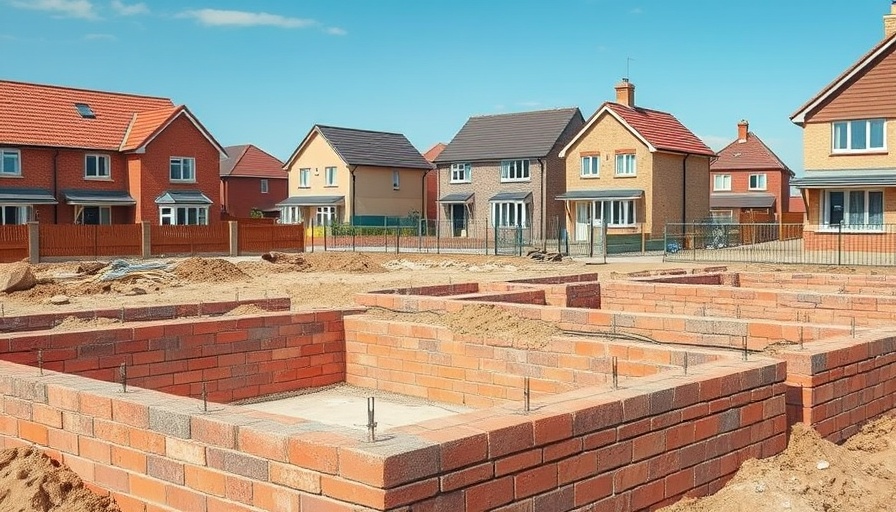
Understanding Construction Growth Amid Uncertainty
The construction industry in London is poised for growth, but uncertainty looms larger than ever. As predicted by the Construction Products Association (CPA), the construction output is expected to rise by 1.9% in 2025, followed by a more robust 3.7% increase in 2026. Yet, factors such as planning delays and potential tax rises add a cloud of uncertainty over these forecasts.
The Backbone of Future Growth: Private Housing
Private housing remains a critical pillar of the construction industry's growth trajectory. The CPA forecasts a 4.0% rise in private housing output for 2025 and a noteworthy 7.0% increase by 2026. This growth is contingent upon a rich tapestry of consumer confidence and substantial financial backing. However, the lingering fear of inflation remains a barrier that homeowners must navigate before committing to large expenditures.
The Impact of Economic Factors on Home Improvement
For young homeowners in London, the current climate can feel precarious. While statistics suggest a potential 2.0% growth in private repair, maintenance, and improvement (RMI) activity in 2025, this is closely tied to homeowners' willingness to invest in their homes after the economic upheaval of the past few years. If homeowners continue to prioritize savings over spending, as suggested by the CPA, 2025 might see only a tepid recovery in RMI activities.
Infrastructure: The Unsung Hero of the Construction Boom
It's important to note that infrastructure projects like HS2 and Hinkley Point C are often the unsung heroes in these forecasts. While private housing sees fluctuating demand, infrastructure activity maintains a steady pulse, with growth expected to rise by 1.9% in 2025. However, recent delays and cancellations in road and rail projects highlight a persistent worry: will these ambitious plans meet their deadlines?
Looking Ahead: What Can Homeowners Expect?
The outlook for homeowners boils down to one critical question: when will mortgage rates ease? The uncertainty is palpable; many potential buyers stand on the sidelines, waiting for favorable conditions before taking the plunge. As time ticks into 2025 and 2026, it’s vital for homeowners and prospective buyers to keep a keen eye on the fluctuating economic landscape.
Practical Tips for Young Homeowners
As the construction and housing market grapples with uncertainty, here are a few practical tips for young homeowners:
- Stay Informed: Keep abreast of local planning developments and forecasts from reliable sources like the CPA.
- Budget Wisely: If you’re considering home improvements, take an honest look at your finances to understand what you can afford.
- Explore Sustainability: Look into government-subsidised energy efficiency programs that can not only save you money but increase your home’s value.
Actionable Insights for Further Growth
Despite the uncertainty surrounding construction forecasts, this could be an opportunity for homeowners. By remaining proactive and engaging with local trends in construction and home improvement, London’s young homeowners can position themselves advantageously. Stay close to community projects that provide insight into how the local economy is progressing. You never know when a new initiative or home improvement project might light the way for your home investment strategy.
As we look ahead to the expected challenges and uncertainty in the coming years, remember that remaining informed and engaged empowers you to make sound decisions about your property. Now is the time to explore your home improvement options and prepare for the inevitable growth in the construction sector, starting from the heart of your communities.
 Add Row
Add Row  Add
Add 




Write A Comment